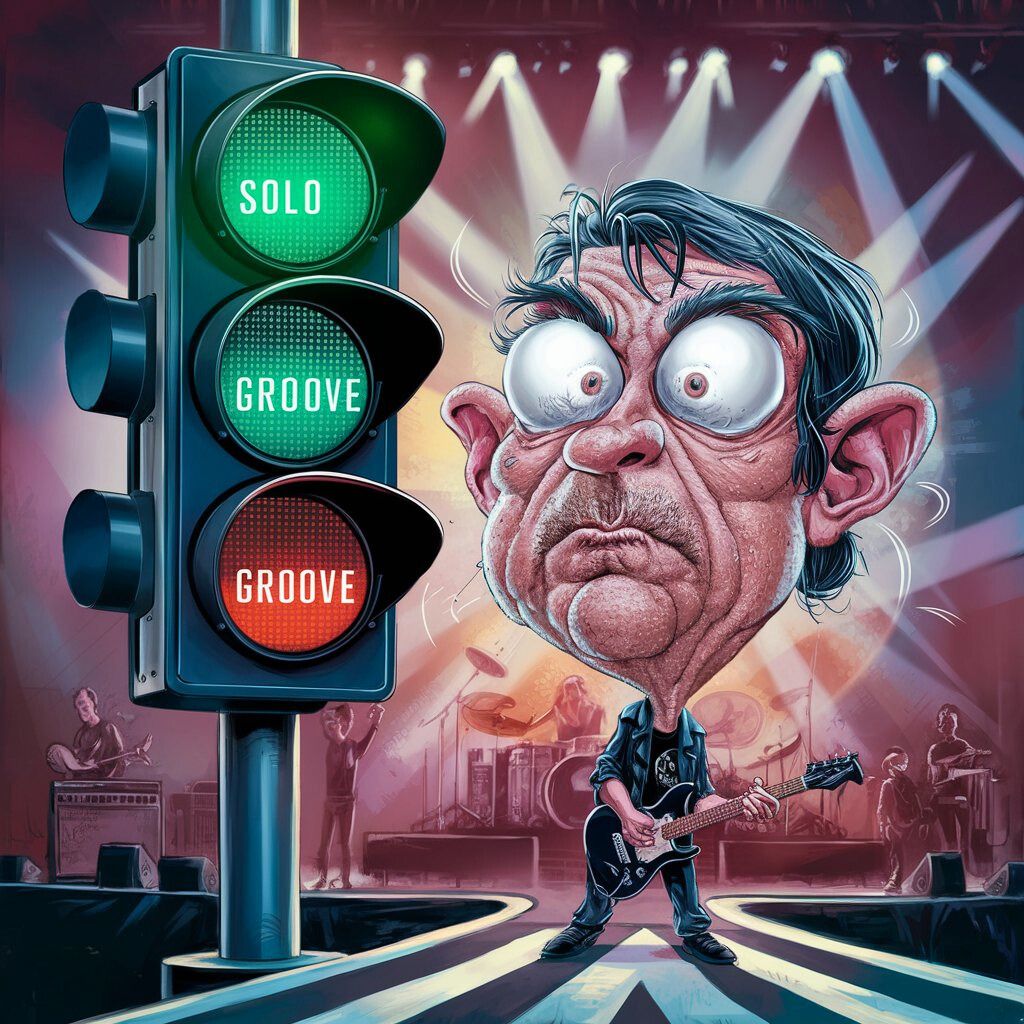Playing in a band is like being part of a well-oiled machine, and it can be one of the most rewarding experiences for a musician. But anyone who's been in a band for a while knows it's not just about playing your instrument well—it's about knowing how to contribute to the overall sound and feel in a way that elevates the entire group. For intermediate and advanced guitar and bass players, mastering when to step forward with a solo or fill, and when to hold back to maintain the groove, is a crucial skill that can make or break the band’s vibe.
So, no matter if you're jamming with a local group, playing gigs regularly, or even recording, striking that balance between leading and supporting is essential. Let’s dig into some strategies, and I'll even share some of my own experiences from years of playing in different band settings.
Understanding Your Role in the Band
Differentiating Between Rhythm and Lead Roles
One of the first things every musician should understand is their role in the band. Are you the rhythm section? Are you supposed to be out front more often than not? Or is your job to hold it down while someone else shines? Defining your role can take some of the guesswork out of when to step forward or hang back.
For example, if you’re primarily playing rhythm guitar, your job is to build the foundation. I’ve seen players, myself included, get so wrapped up in adding flashy parts that the song ends up feeling cluttered. The rhythm section is the backbone of the song—without it, the rest falls apart. Think of guys like Malcolm Young of AC/DC. He wasn’t shredding solos all over the place, but his powerful rhythm playing made the band’s sound iconic. Same goes for bassists like Adam Clayton of U2—simple, steady, and effective.
If you’re playing lead, sure, you get more moments to shine, but you still need to listen and be aware of how your playing fits into the bigger picture. The worst thing you can do is solo over everything because the music will feel disjointed.
The Power of Holding the Pocket
One lesson that’s critical for both guitarists and bassists is learning to “hold the pocket.” This is especially true for bassists, but guitarists need to be aware of it as well. Holding the pocket means locking in with the drummer and keeping the groove tight and consistent. It’s about creating a steady pulse that everyone else can play off.
I’ve been guilty of trying to get too fancy on bass when I should’ve just been holding the groove. A few years back, I was jamming with a funk band, and every time I tried to throw in a fancy fill, the groove would lose its punch. After a while, I learned to focus on the pocket and only add embellishments when there was actual space for it. That’s when the whole band started sounding tighter.
Think of players like Pino Palladino or Duck Dunn from Booker T. & the MG's. They weren’t known for their flashy solos but for their rock-solid grooves. When you listen to those players, you can hear how essential that kind of playing is for the overall sound.
When to Step Forward: Reading the Room and Knowing Your Moment
Recognizing When the Song Needs You to Shine
The trick to knowing when to step forward as a guitarist or bassist is learning to recognize the natural flow of the song. There are moments in almost every song where the music opens up, giving you the chance to step into the spotlight with a solo or fill.
But there’s a right way to do it. I remember playing in a blues band, and the lead guitarist used to think every solo had to be a flurry of notes. Over time, he realized that the best solos were the ones that served the song rather than just showcasing his skills. In one slow blues number, he held back and only played a handful of notes, but he focused on making every note count. The reaction from the crowd was much better than when he overplayed.
A great solo should complement the song's mood. You don’t always need to be flashy—sometimes just a few well-placed notes can make a bigger impact. Think David Gilmour's solos with Pink Floyd—he’s not playing a million notes a second, but every note is dripping with emotion and purpose.
Adding Fills and Embellishments Tastefully
Another challenge is knowing when and how to add fills. As a bass player, this can be especially tricky. I once played in a rock band where I kept adding fills in between verses because I thought it added excitement. But after recording one of our practices and listening back, I realized I was stepping on the lead guitarist's toes and cluttering the mix. Less really was more.
If you’re a guitarist, think about players like John Mayer or Mark Knopfler—they’re masters of adding tasteful fills between vocal lines or during instrumental breaks without overshadowing the melody. For bassists, look at someone like Jaco Pastorius, who knew when to throw in jaw-dropping fills and when to just sit in the groove.
Listening to the Band: Active Awareness
Listening is key. And I don’t just mean passively hearing the music—I mean actively listening to everything going on around you. You need to be aware of the drummer's rhythm, the vocalist’s phrasing, and the dynamics of the other instruments. A good player is always adjusting based on what’s happening in the moment.
Another friend of mine (lead guitarist) learned this the hard way. In one band he was in, he kept trying to force a solo into a particular song. Every time he did it, the song lost momentum. It wasn’t until he actually listened to how the song was supposed to flow that he realized he was stepping in at the wrong time. Once he backed off and saved his solo for the bridge, the song felt more cohesive.
Communication: The Key to a Cohesive Band Dynamic
Open Dialogue With Band Members
Open communication is crucial for figuring out when to step forward and when to hold back. I’ve been in plenty of bands where a simple conversation could have solved issues about who should be taking the lead at certain points. Don’t be afraid to talk about dynamics and roles with your bandmates. It can feel awkward at first, but it helps prevent stepping on each other’s toes.
Establishing Roles: Who Leads and When?
In many bands, there’s an unspoken hierarchy—who leads, and when? Maybe it’s the vocalist during verses, the guitarist during the solos, or the bassist during breakdowns. Establishing these roles upfront can save a lot of headaches later on. I’ve been in situations where no one really knew who was leading, and it resulted in chaotic performances.
Discussing roles is especially important in rehearsals. I once joined a band where the drummer and I kept clashing because we weren’t sure who was supposed to lead the tempo changes. Once we talked it through, we figured out a better system, and our live shows improved dramatically.
Building Trust With Your Bandmates
Trust is essential in a band. You need to trust that your bandmates will give you space when it’s your time to shine, and they need to trust that you’ll hold back when it’s theirs. This is something that takes time to build but can be reinforced through open dialogue and lots of practice together.
A simple exercise that worked well for one of my bands was taking turns leading improv sessions during rehearsals. We’d jam for 10 or 15 minutes, with one person taking the lead while everyone else followed. This helped build trust and allowed us to get a feel for each other’s playing styles.
Dynamic Strategies for Live Performances and Recording
Adapting to Different Settings: Stage vs. Studio
Playing live and recording in a studio are two different beasts. Live, you’ve got the energy of the crowd and the interplay with your bandmates to guide your dynamics. You might take more chances or step forward more in a live setting because the adrenaline is pumping, and the crowd is feeding off the energy.
In the studio, it’s a different story. You’re thinking more about the overall mix and how everything sits together. I’ve had experiences where what felt amazing on stage didn’t translate as well in the studio. You’ve got to be more deliberate in the studio—leaving space for vocals, other instruments, and even silence can be just as important as the notes you play.
Live Performance Dynamics: Feeding Off the Crowd and Each Other
During live performances, there’s nothing like feeding off the energy of the crowd. Sometimes, the vibe of the room will tell you when to step forward and let loose or when to pull back and focus on locking in with the rest of the band. I’ve played shows where the energy was so high that I ended up improvising more bass-solos than planned, and the crowd loved it. Other times, the vibe called for a more restrained, groove-oriented performance.
Studio Techniques for Creating Balance
In the studio, you need to be extra mindful of not overplaying. One tip I picked up from a producer was to always play for the song, not for your ego. It’s easy to get caught up in the moment and throw in everything you’ve got, but often, the best tracks are the ones where you leave space for other instruments, vocals, and even dynamics like reverb and delay to fill in the gaps.
Personal Growth: Developing the Intuition to Know When to Lead and When to Support
Practicing Restraint: Exercises to Help You Hold Back
If you’re like me, holding back can feel counterintuitive at first. One exercise that helped me was playing along to simple backing tracks and intentionally minimizing the number of notes I played. I'd focus on playing just the root notes on bass or simple chords on guitar and seeing how much I could strip down without losing the song's feel. This helps build an awareness of when playing less actually makes the music more powerful.
Another method is practicing with a band where you deliberately take turns stepping up and holding back. Try jamming on a familiar song and agreeing that for one round of verses and choruses, you’ll keep your playing minimal. Then, on the next go-around, let yourself be more expressive with fills or solos. This helps train you to be conscious of when and how to adjust your dynamics.
Knowing Your Strengths and Weaknesses
Being effective in a band also requires knowing your own strengths and weaknesses. Are you naturally more of a rhythm player who thrives in holding the groove, or do you gravitate toward flashy solos? Self-awareness is key to contributing effectively.
For example, while my main instrument is bass, I play guitar with certain bands as well, and I know that I’m stronger at locking in with the rhythm section than I am at extended solos. That’s not to say I can’t solo, but when I do, I make sure it’s brief and to the point. I’ve learned to leave the extended leads to the guitarist who specializes in that. Recognizing this has made me a much better bandmate because I focus on what I do best—holding down the groove—while letting others shine where they excel.
If you’re unsure of your strengths, recording your practices and listening back can help. Take note of where you feel most comfortable and where things might get a little shaky. This will guide you in knowing when to step forward and when to fall back.
Learning From the Greats
One of the best ways to develop your intuition is by studying the masters. Take bassists like Pino Palladino or Jaco Pastorius—they have a phenomenal sense of when to lay back and when to take center stage. Pino, in particular, is known for playing bass lines that serve the song perfectly, often using fewer notes but nailing the feel.
For guitarists, John Frusciante of the Red Hot Chili Peppers is a great example. He knows when to let the rhythm section groove while adding subtle textures or when to unleash a melodic lead. Take his playing in "Scar Tissue"—the verses are understated, with Frusciante holding back and letting the song breathe, but when the instrumental breaks come, he delivers those simple, soulful slide guitar lines that perfectly complement the mood of the track. Listening to these players can teach you that sometimes, stepping forward is less about complexity and more about timing and feel.
Conclusion: The Art of Musical Contribution
At the end of the day, being a great bandmate isn’t just about technical skill—it’s about knowing when to step forward and when to hold back to serve the music as a whole. It’s about being able to listen, communicate with your bandmates, and contribute to the overall dynamic. Whether you’re on stage in front of a live audience or in the studio working on a new track, the ability to balance leading and supporting roles is what sets seasoned players apart from the rest.
So, next time you’re with your band, take a moment to consider your role in the song. Ask yourself, “Is now the time to shine, or is now the time to hold the groove?” Mastering that balance will not only make you a better musician but will also elevate the sound of the entire band. And trust me, your bandmates—and the audience—will notice.
Now get out there, plug in, and find that perfect balance between stepping up and laying back. Your band will thank you for it!
Enhance Your Musical Journey
If you're a guitar or bass player, whether you're just starting out or have been playing for years, you might find it interesting to explore CFG's gear collections. Having the right equipment can really enhance your playing experience and open up new creative possibilities. From comfort straps, via mini-amps, to wireless systems, there's always something new to discover that can help you get the most out of your musical journey. Happy playing!
CFG Wireless Systems Collection
CFG Comfort Straps Collection
CFG Essentials and Accessories Collection
CFG Lifestyle Collection






